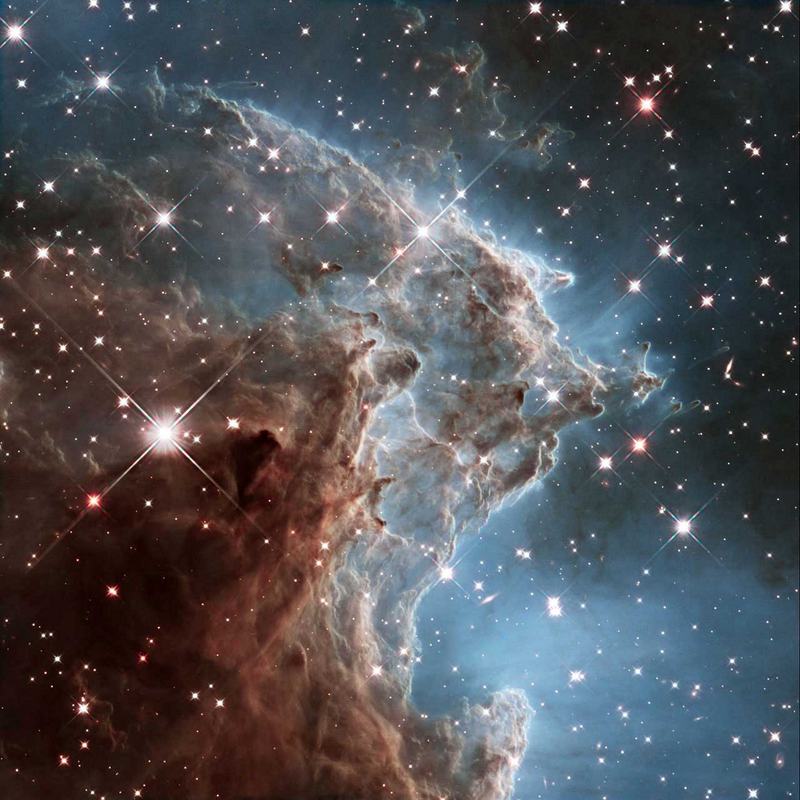
Currently, Scholz’s star is a small, dim red dwarf in the constellation of Monoceros, about 20 light years away, and now moving away from us. However, about 70,000 years ago, it just grazed the outer reaches of the solar system as it wandered by, accompanied by its brown dwarf companion.
At the closest point in its flyby of the solar system, Scholz’s star would have been a 10th magnitude star – about 50 times fainter than can normally be seen with the naked eye at night. But because it is magnetically active, such stars can “flare” and briefly become thousands of times brighter. So it is possible that Scholz’s star may have been visible to the naked eye by our ancestors 70,000 years ago for minutes or hours at a time during these flaring events.
What would our ancestors have made of this stranger in the heavens? What would we have made of it a thousand years ago if it were passing by us then and not 70,000 years previously?
An artist’s concept of Scholz’s star with its brown-dwarf companion in the foreground during their flyby of the solar system 70,000 years ago. The sun would appear as a bright star from the pair (left background). Credit: Michael Osadciw/University of Rochester

 I rather like it when scientists come up against something they can’t understand. Tabby’s star is one such conundrum. It’s behaviour is – pun intended – out of this world.
I rather like it when scientists come up against something they can’t understand. Tabby’s star is one such conundrum. It’s behaviour is – pun intended – out of this world.
 I look to the heavens for meaning, not for science, although I find meaning in the science.
I look to the heavens for meaning, not for science, although I find meaning in the science.